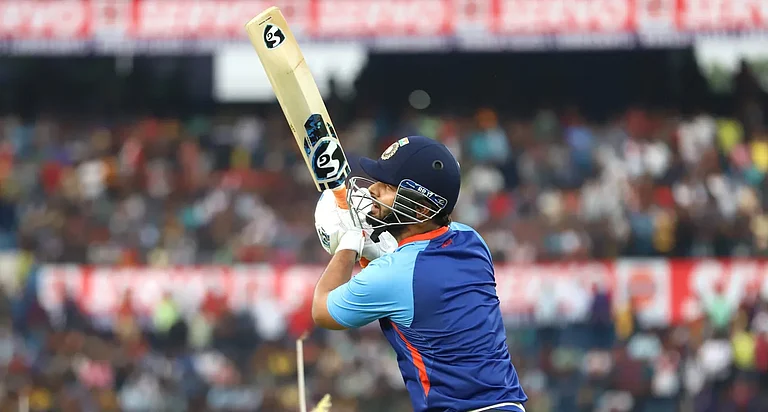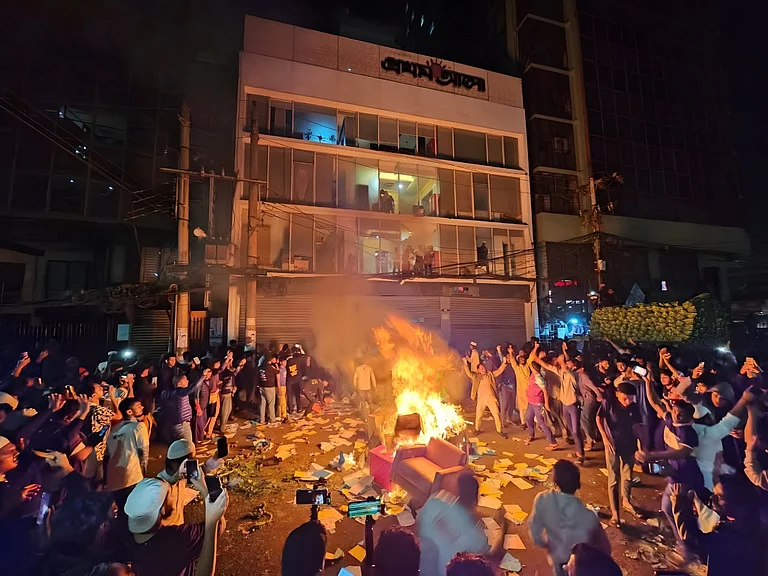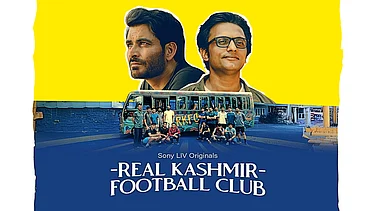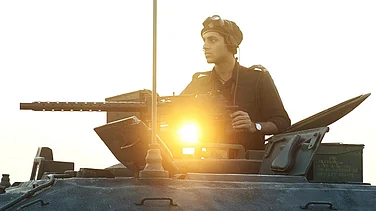Till the digital onslaught dealt a deadly blow to the good old analogue arc-illumined projectors, their operators, called the ‘projectionists’, were able to earn their living. For long spells of time, they were deeply dedicated to those machines that beamed entertaining stories, songs, dances and dialogues on the silver screens in front of audiences in dark auditoria. This blow was aided and abetted by the real estate boom of the 1990s, the not-so-conducive government laws for single-screen cinema houses and, more recently, the pandemic with its paralytic effect. In the Analogue Age, every single-screen cinema house had two 35-mm projectors for an uninterrupted run of a film and, generally, each had at least three or four projectionists employed for two shifts. They did the multi-tasking of physically cleaning, maintaining, threading, winding, rewinding, loading, checking and changing reels, checking the carbon arc for proper illumination and synchronising sounds and images once the Talkie era dawned in the early 1930s. Threading involved the proper placing of the film over the sprockets and through the guides and paths of a projector before it was put into operation.
Interestingly, the largest cluster of single-screen cinemas in the city was around Grant Road Railway Station on both its east and west sides, with the red-light Pilla House—originally Play House—district forming a dense hub of nearly two dozen cinemas within a radius of a kilometre or two. Let me pull out a story from my museum of memories. Gulshan was one of the cheapest—ticket were sold at around Rs 10 each for Stalls—single screens, which was showing the 1975 classic Deewar in the early 1990s. Watching films in Pilla House single screens was a unique experience, and one of the key players in providing this experience was the ‘projectionist’ who inhabited the ‘booth’ in the cinema house. Speakers blaring and bouncing off walls and whirring fans, semi-illuminated moving images onscreen gone magenta could not dampen the audiences’ enthusiasm for cinema.
The scene: two brothers, Vijay (Amitabh Bachchan, who has made a big fortune through illegal means) and Ravi (an upright policeman played by Shashi Kapoor) face to face, arguing. Vijay tells Ravi, to loud whistling and clamouring among the audience, “Aaj mere paas buildingein hai, property hai, bank balance hai, bangla hai, gaadi hai, kya hai tumhare paas?” (Today, I own buildings, properties, a bank balance, a bungalow. What do you have?). After a few fast cuts, the camera momentarily pauses on Ravi’s face, looking intensely at Vijay—suddenly the audience slips into a complete hush—eagerly awaiting Ravi’s retort. From the next metallic seat, I could hear the heartbeat of a middle-aged over-powdered, paan-chewing fat lady who had shouted scornfully at the ethical Vijay a while ago. The moment Ravi utters the words, “Mere paas maa hai…” (I have Mother), the lady jumps up from her seat, along with almost the entire audience, shouting, “Once more! Once more!” That was their message to the projectionist, loud and clear. Iqbal, the projectionist-in-the-booth, senses the pulse and quickly rewinds the reel and replays it—it was not that easy digital fast-forward—backward then. The scene was played again. Knowing his audiences’ moods, the projectionist often skipped the scenes he considered unimportant. This interactive relationship between the projectionist and the audience was unique to Pilla House single-screen cinemas.
In Mumbai’s unique Cinema Lane at Dhobi Talao stands the elegant Art Deco building, Liberty Cinema. One of its three projectionists, Yezdi Khambatta, a taciturn but devoted Parsee veteran, misses his busy days when he operated the sturdy, stable machine like a magician. The new automatic digital projector has rendered him an onlooker. He still caresses the German Bauer projector with deep nostalgic love.
As a film society activist, I personally knew many projectionists in the big, 800–1200-seat commercial cinema houses. Some had smaller preview or mini theatres, with 80–100 seats, rented to producers and exhibitors to preview their films. Later, film societies were also permitted to show films in those minis to which entry was permitted to members only. The city had also several cultural institutions either attached to foreign consulates or private organisations, showing films on either 16-mm or 35-mm projectors. Once in 1992, I was presenting a massive retrospective of the Dutch–French master Joris Ivens’ films at the NCPA’s Tata Theatre on behalf of the Bombay International Film Festival of Documentary, Short and Animation Films organised by the Films Division. In this retrospective, one film was in normal 35 mm but had a section in CinemaScope in the same reel. The projectionist had to change the lens on the projector in a split second. Marceline Loridan, Ivens’ widow, was terribly tense as she had doubts about the ‘Third World’ projectionist’s capability. To her amazement, Chandrakant, who was on the projector, did it skillfully and swiftly. Thereafter, she would always proclaim, “Bombay was the best.”

However, we cannot ignore the once hazardous history the proverbial projectionist carried on his back. The early cellulose nitrate film was highly combustible and put the projectionist’s life at risk. In fact, it was this combustibility that gave birth to this exclusive space called the ‘booth’ in cinema houses, from where the movie is projected on to the screen. It would often catch fire due to the heat generated by the carbon arc projector. The fire would spread rapidly while emitting toxic smoke. According to an estimate published in a 1936 issue of the journal International Projectionist, one American projectionist died every 18 days, on average.
The Indian film industry and individual trade bodies do not care to keep any such data. Considering the conditions of our projection rooms and projectors, we can safely guesstimate the loss of life gone unrecorded. Projectionists had to work in fairly hot environments within enclosed non-air-conditioned spaces, doing the multiple physical activities described above. The phasing out of nitrate film in favour of less flammable acetate ‘safety film’ started in the 1930s and by 1952 Eastman Kodak retired the nitrate film completely. Many older films were transferred to modern film stock. This techno-temporal phase, I call it the Neo-Analogue Age, made the projectionist’s life less hazardous, but his livelihood still remained precarious. Eventually, changeovers in modern equipment were made automatically or semi-automatically. Fully automated projection booths, some with a capacity of four and a half hours of continuous programming, came increasingly into use in the late 1970s, virtually eliminating the need for full-time projection personnel, though in India the process was not as brutally rapid.
While you are reading this piece, the world is on the eve of celebrating the centenary of Buster Keaton’s 1924 silent classic, Sherlock Jr. In the movie, Keaton is the projectionist, who is in love with a beautiful girl but has a rival, the local sheikh. This sounds like one of the staple triangular love stories except that Bollywood never imagined a ‘projectionist’ as a protagonist, who, caught in the film industry’s merciless hierarchy, plays the most crucial role at the end of the film production–distribution–exhibition game. Incidentally, the world last year also celebrated the Golden Jubilee of yet another US film called The Projectionist (1971) directed by Harry Hurwitz.
The legendary cinematographer Subrata Mitra always said it was the projectionist who could finally make or mar his film no matter how much care and compassion it was shot with. However, the winds of change went on to endanger the projectionist. And yet, he kept the show going until the digital domain completely wiped out analogue mechanical projectors and his presence in the ‘booth’. Many single-screen theatres have shut down and most projectionists rendered jobless. The Age of the Analogue has ended. In the calendar year 2021, the Indian Central Board of Film Certification certified 12,144 films, including video, of which 1818 were theatrical Indian feature films. None of them was analogue.
However, there are still a few brave ones, such as Karan Suri Talwar at Mumbai’s Harkat Studios, who valiantly retain the analogue heritage. Talwar has rescued and restored 35-mm and 16-mm mechanical projectors, still runs celluloid films regularly in his studio screening space and processes exposed films in his studio laboratory. More importantly, here you will find women operating projectors in otherwise completely male domain. The indefatigable Shivendra Singh Dungarpur of the Film Heritage Foundation is busy restoring rare films shot on celluloid and preserves the old projection equipment.
A not so very old memory still haunts me. That was at an eminent international film festival at a Mumbai multiplex. After the event managers’ smiles and bouquets, the Danish film-in-competition began to be projected onscreen. In minutes, the Danish actress sitting next to me began to scream, “That is not me! That’s not me!!” Her frenzy was not inappropriate. The film was in CinemaScope, but the young projectionist in the multiplex had not changed the requisite lens and consequently her face on the screen had become oblong and distorted beyond recognition. You cannot erase the memory of the analogue projectionist in the booth, while the digital binaries burn your heart without the good old arc.
(This appeared in the print edition as "The End of An Era")
(Views expressed are personal)
Amrit Gangar is a Mumbai-based film critic, theorist, curator, author and historian
























